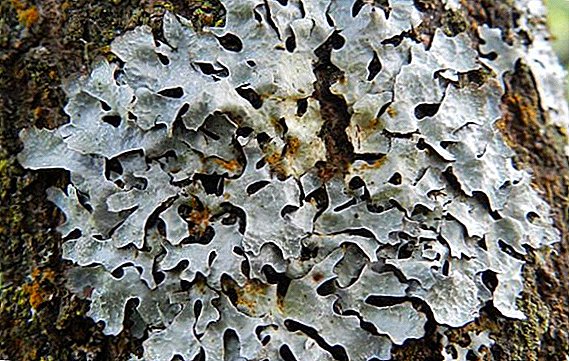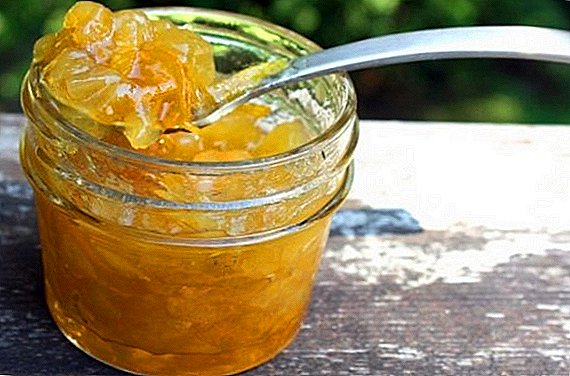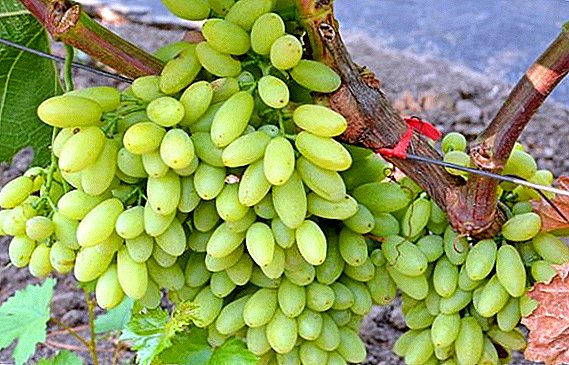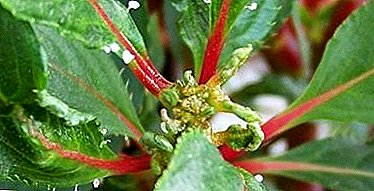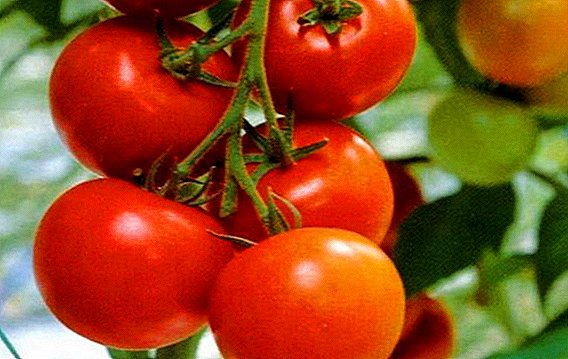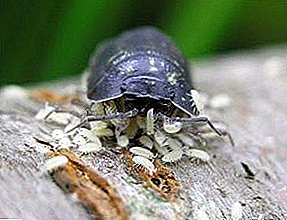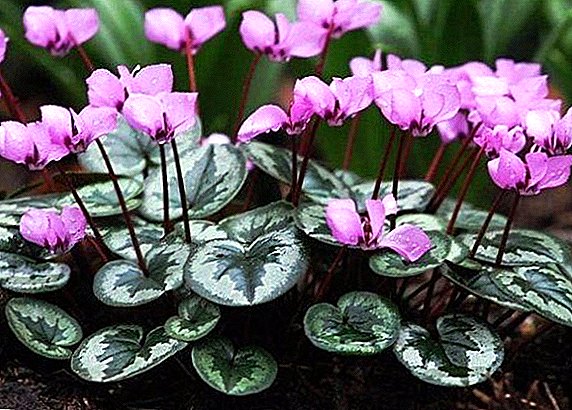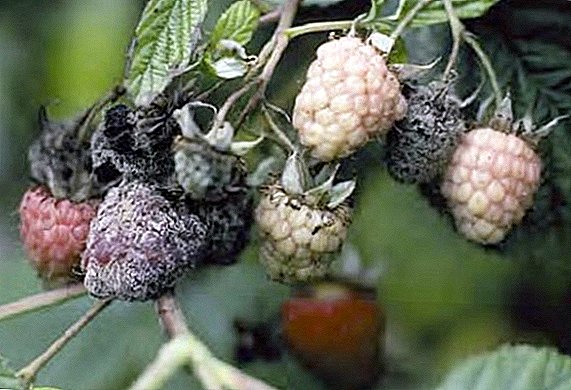 Despite the breeders' efforts to develop raspberry varieties that are more resistant to diseases and viruses, plants are still susceptible to them. This article describes the most common plant diseases, their symptoms and methods of control.
Despite the breeders' efforts to develop raspberry varieties that are more resistant to diseases and viruses, plants are still susceptible to them. This article describes the most common plant diseases, their symptoms and methods of control.
Raspberry anthracnose
Anthracnose is a fungus that appears as spots on raspberry stalks. Spots of white and gray are bordered with bright red. Fungal spores multiply rapidly and appear on all parts of the plant: bark, leaves, berries. On the cortex, the fungus is manifested by black dot spots, the leaves wither away and wither, and the berries are covered with ulcers and dry. The affected plant does not develop, loses its deciduous mass, the crop dies later, the characteristics of cold resistance decrease, the bush dies.  To avoid illness, raspberries are treated with Bordeaux mixture before blooming buds, a second time during the formation of buds, and a third time sprayed in the fall, gathering the harvest. The diseased plant can be reanimated by removing the affected shoots. If nothing has helped, and the disease has not receded, it is necessary to dig up and burn the entire bush.
To avoid illness, raspberries are treated with Bordeaux mixture before blooming buds, a second time during the formation of buds, and a third time sprayed in the fall, gathering the harvest. The diseased plant can be reanimated by removing the affected shoots. If nothing has helped, and the disease has not receded, it is necessary to dig up and burn the entire bush.
Important! Too dense and heavy soil puts pressure on the root system of raspberries, not giving it food and oxygen.
"Witch's broom"
Disease raspberry "witch's broom" is viral. Viruses infect a plant, penetrating wounds caused by carelessness during loosening or other garden procedures. The virus can penetrate through damage caused by rodents or insect parasites. The diseased plant produces a lot of thin sterile shoots, the deciduous mass thins and shallows considerably, the fruit deteriorates and then stops.  The disease can not be cured, so it is necessary to protect the raspberries from the invasion of ants who like to breed aphid colonies. To do this, there are several popular ways:
The disease can not be cured, so it is necessary to protect the raspberries from the invasion of ants who like to breed aphid colonies. To do this, there are several popular ways:
- Immediately after the winter, while the insects are in hibernation, you need to fill the anthill with water;
- Since insects do not tolerate harsh odors, they can be discarded by spilling kerosene around the anthill.
Verticilous wilt, or wilt
 Wilt is a raspberry fungal disease. This fungus multiplies very quickly and affects the entire bush. The fungus can infect raspberries by penetrating damage to the trunk or root growth. On the trunk lilac-gray spots, and then the strips rise to the berries. The bark is covered with cracks, shoots die, root shoots, leaves fade and then the whole bush. The sooner you notice signs of a fungus, the greater the chances of saving a shrub. In the early stages, the following drugs will help: Topsin-M, Trichodermin, Previcur, and Vitaros. They should be used according to the instructions. If the plant is completely affected, scoop out the bush and burn it.
Wilt is a raspberry fungal disease. This fungus multiplies very quickly and affects the entire bush. The fungus can infect raspberries by penetrating damage to the trunk or root growth. On the trunk lilac-gray spots, and then the strips rise to the berries. The bark is covered with cracks, shoots die, root shoots, leaves fade and then the whole bush. The sooner you notice signs of a fungus, the greater the chances of saving a shrub. In the early stages, the following drugs will help: Topsin-M, Trichodermin, Previcur, and Vitaros. They should be used according to the instructions. If the plant is completely affected, scoop out the bush and burn it.
Raspberry curl
Raspberry curliness is dangerous because the affected bushes need to be uprooted and burned completely, despite the fact that only some parts can be affected. This virus is not treated. Symptoms of the disease are manifested in the deformation of the leaves, shoots, fruits. Fruits become gray, flattened and dry. The disease can destroy the entire landing.
Carriers of the virus are mites and aphids. First of all, carefully inspect the seedlings, insects may be on them, the treatment of raspberries in the spring with insecticides is desirable. This procedure will repel insects and protect against many diseases. Sick bushes need to be disposed of in order not to spread the virus to the entire raspberries. 
White spot
Septoria in raspberries is common. The fungal-type disease affects the leaves and shoots of bushes with brown spots. Over time, the spots turn white in the center and spread throughout the bush, spores in the form of black dots cover the bark of the plant, which causes cracks on it. Because of the fungus, the raspberry buds die, which leads to crop failure.  Remove damaged parts of the bush. Before the buds bloom, preventive treatment of raspberries with copper sulfate is necessary. 100 g of vitriol is diluted in a bucket of water; 250 ml of the mixture is enough for one bush. Spraying the soil around the bush will also be more effective.
Remove damaged parts of the bush. Before the buds bloom, preventive treatment of raspberries with copper sulfate is necessary. 100 g of vitriol is diluted in a bucket of water; 250 ml of the mixture is enough for one bush. Spraying the soil around the bush will also be more effective.
Attention! The safest period of growth of raspberries in one place is not more than twelve years. After the plant begins to bear fruit, develop and is more susceptible to disease.
Ring spots
The ring spot virus spreads pests - nematodes. These parasites can live in the soil for a long time, settling in the root system of plants. To disinfect the soil there are drugs - nematocides. Work the soil before planting raspberries. The disease is difficult to detect. As the affected leaves curl in the summer, they become dehydrated and are cut off by the wind due to their fragility. You can only notice the symptoms of a lesion in spring or autumn: the deciduous mass of the raspberry turns yellow. Sick plant must be removed from the site. 
Did you know? The Romans were already engaged in cultivating raspberries in the first century of our era; there is written evidence of this from Cato the Elder in his descriptions of fruit crops.
Purple spot
Purple blotch or didimella manifests itself in the form of lilac spots on the stems. The spots blot over time and change color to a purple-brown color with a lighter center. The branches and buds on them at the same time do not develop, become brittle, and the raspberry dries.  Affected plants need to be destroyed, and healthy to treat Bordeaux liquid. The first treatment is carried out when the young branches grow to 20 cm, the second - before the start of flowering. Carry out the last procedure after harvesting.
Affected plants need to be destroyed, and healthy to treat Bordeaux liquid. The first treatment is carried out when the young branches grow to 20 cm, the second - before the start of flowering. Carry out the last procedure after harvesting.
Ulcer spot
Ulcerative spotting is caused by a fungus that infects raspberry stalks with blurred brown spots. On the spots are formed ulcers, spraying the spores of the fungus. Fabrics of stalks and leaves become rotten, the bush dies. The main danger is that spores easily fall on healthy bushes that grow nearby.  It is possible to get rid of the disease with the help of treatments with preparations containing copper. The affected parts of the plant must be removed and disposed of.
It is possible to get rid of the disease with the help of treatments with preparations containing copper. The affected parts of the plant must be removed and disposed of.
Bacterial root cancer
Raspberry root cancer is not easy to detect. Affected bush stops growing, foliage and stems turn yellow, fruits become small and tasteless. Detect the disease can be taken up by a hive transplant. The disease affects the root shoots of the plant, forming tumors on the main stem of the root system.  Curing cancer is hard. If you find this, treat the roots with a solution of copper sulfate, plunging the roots into it for ten minutes.
Curing cancer is hard. If you find this, treat the roots with a solution of copper sulfate, plunging the roots into it for ten minutes.
Raspberry mosaic
Raspberry mosaic is a virus in which leaves are deformed, losing color. Gradually the whole bush begins to wipe. The newly formed shoots are weak and non-viable, the fruits are shrinking, losing taste.  Mosaic is incurable. Sick plants are subject to destruction. For prevention, treat the soil against insects, as they are the carriers of the disease: aphid, mites and others.
Mosaic is incurable. Sick plants are subject to destruction. For prevention, treat the soil against insects, as they are the carriers of the disease: aphid, mites and others.
Mealy dew on raspberries
Raspberry mealy dew develops well with high humidity. With the defeat of the disease on the leaves and stems, a white scurf of loose consistency appears. The leaves dry and fall, the raspberry berries take an ugly form, the stems become brittle. To treat the plant for powdery mildew, you can with the help of copper-containing drugs.
Gray rot
 Botrytis - a fungal disease of the plant, first the disease affects the fruit, covering them with dark spots. Over time, the spots grow, leading to rotting of the berries, then the fungus passes to the stem and then covers the stems with brown rings. Stems dry at the same time. Spots spread to the leaves, internodes, infect the plant buds.
Botrytis - a fungal disease of the plant, first the disease affects the fruit, covering them with dark spots. Over time, the spots grow, leading to rotting of the berries, then the fungus passes to the stem and then covers the stems with brown rings. Stems dry at the same time. Spots spread to the leaves, internodes, infect the plant buds.
Upon detection, it is required to remove all affected areas of the plant and burn it. In the spring, before the formation of buds, process the raspberry Bordeaux liquid. Neither the winter on the soil should remain no remnants of diseased plants.
Raspberry rust
Rust on raspberry spreads at high humidity, before dealing with it, remove the affected parts of the raspberry. Symptoms of rust are manifested by gray sores with a red border. On the inside of the fox, the fungus scatters spores - a dark-colored patina. If time does not get rid of the disease, it will save you from the harvest. Burn the diseased parts, treat the remaining bushes with copper-containing preparations or Bordeaux mixture. 
Interesting! Clemson University scientists recently made public their research. The raspberry extract tested on laboratory animals can kill 90% of cancer cells. Until now, no antioxidant known to science is capable of such.
Raspberry chlorosis
Raspberry chlorosis is easy to see but impossible to cure. Chlorosis is manifested in yellow spots, spreading from the leaves and further along the branches. Raspberry fabric looks burned out. Berries shrink and lose taste. Closer to the fall, the symptoms are not visible, but make no mistake, the disease will overwinter and destroy the bush in the spring, and behind it will spread to the rest of the raspberries. Infected plants must be disposed of. Growing raspberries in these areas will be safe in ten years. 
Preventive measures against raspberry disease
Preliminary protection of raspberries from diseases is primarily the observance of the rules of agricultural engineering and crop rotation. Do not plant raspberries next to potatoes, strawberries and tomatoes. The worst predecessors for raspberries are strawberries, cabbages and bouillon. It is best to plant after beans, beans, peas.
After harvesting carefully clean the area from dried leaves and fallen branches. It is in them that fungal spores overwinter. Do not thicken raspberries, so the disease passes from a bush to a bush easier.
With increased soil acidity, it is necessary to add gypsum when digging (120 g of powder per 1 m²). Cultivate pests, remove weeds. Loosen and weed in rifle circles of raspberry bushes. Act with this very carefully, so as not to damage the plant, it will increase the risk of disease.
Preventive measures against raspberry diseases are in many cases the only plant protection. Observe the modes of watering and fertilizing. Reduce watering during rainy periods: a wet environment contributes to the development of many fungal diseases. Excessive use of nitrogen as supplements also reduces immunity to disease.
No wonder people say: what you sow, you will reap. Precautions and preventive measures will take you some time, but the result of your efforts will more than pay off the sweet harvest and useful preparations for the winter.


